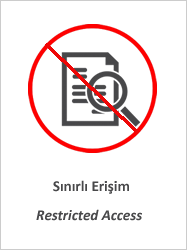Assessment of nocturnal polyuria in patients with spinal cord injury at three different mobilization phases: A multicenter cross-sectional study

View/
Access
info:eu-repo/semantics/closedAccessDate
22.12.2021Author
Yeşil, HilalAkkoç, Yeşim
Yıldız, Necmettin
Gök, Haydar
Bardak, Ayşe Nur
Ersöz, Murat
Kutlay, Sehim
Buğdaycı, Derya
Paker, Nurdan
Tunç, Hakan
Köklü, Kurtuluş
Alemdaroğlu, Ebru
Koyuncu, Engin
Özişler, Zuhal
Güneş, Seçilay
Alkan, Hakan
Tezer, Tevfik
Baş, Ayşenur
Türkoğlu, Meryem Burcu
Yazar, Zeynep
Hepgüler, Simin
Metadata
Show full item recordCitation
Yesil, H., Akkoc, Y., Yıldız, N., Gok, H., Bardak, A. N., Ersoz, M., ... & Hepguler, S. (2021). Assessment of nocturnal polyuria in patients with spinal cord injury at three different mobilization phases: A multicenter cross-sectional study. The Journal of Spinal Cord Medicine, 1-5.Abstract
OBJECTIVE To determine the prevalence of nocturnal polyuria (NP) in patients with spinal cord injury (SCI) during three different particular phases, and investigate the impact of injury level and injury type on the prevalence of NP.
DESIGN A cross-sectional study.
SETTING Neurogenic Bladder Study Group from six different rehabilitation centers across the country.
PARTICIPANTS 40 patients with SCI.
OUTCOME MEASURES Patients were divided into three groups according to mobilization phase; 1st group included patients confined to bed (n = 14), 2nd group included patients sitting on a wheelchair (n = 19) and 3rd group included patients standing with an assistive ambulation device (n = 7). NP was assessed by nocturnal polyuria index (NPi) and nocturnal urine production (NUP) indexes.
RESULTS No significant difference was found between the groups (P = 0.312 for NPi and P = 0.763 for NUP) in terms of the presence of NP according to their mobilization phase. The night and 24-hour urine volumes showed no significant difference between the groups (P = 0.907 and P = 0.395 respectively). The NPi and NUP values did not show a significant difference between male and female patients (P = 0.826, P = 0.364 respectively), patients with the injury level of ≥T6 and <T6 (P = 0.236, P = 1.00) and patients with a complete and incomplete injury (P = 0.826, P = 0.283).
CONCLUSION In this study, NP was found to be a common problem in patients with SCI regardless of their mobilization phase, injury level and injury type. It was revealed that both NPi and NUP parameters could be used to determine the prevalence of NP in this patient group.















